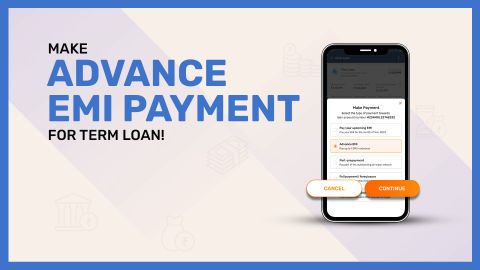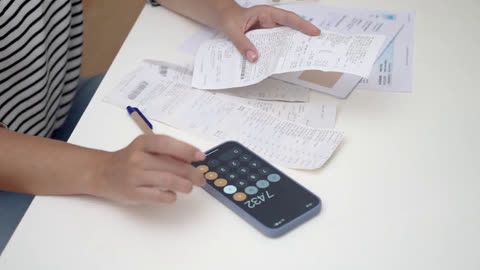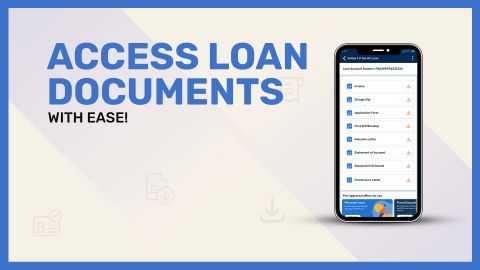Fortunately, most lenders—including Bajaj Finance—provide both online and offline facilities to update your EMI deduction account. This guide explains the key reasons why you might need to update your account, the exact steps to do it, common issues borrowers face, and what documents are required. You will also find helpful links to check your personal loan repayment schedule and download your personal loan statement for better EMI tracking and planning.
Why change your EMI bank account details for personal loan?
When you take a personal loan, your EMI payments are typically set up to be deducted automatically from a registered bank account through ECS or NACH. This ensures timely repayment and avoids manual intervention every month. However, there are several practical reasons why you might need to change EMI bank account details for personal loan repayment during the loan tenure.One of the most common reasons is a change in your primary bank account. If you've closed your existing account or switched banks for better service, benefits, or convenience, updating your EMI account details becomes essential to ensure continued payment without disruption.
Another reason could be recurring debit failures due to insufficient balance. If your current EMI account does not receive regular deposits or is no longer used actively, EMIs may bounce, leading to penalties, overdue charges, and negative impacts on your credit score. Switching to an account with a stable balance or regular income inflow ensures that EMI deductions are processed smoothly.
Some borrowers prefer to consolidate all their loan repayments into a single account for better financial tracking. In such cases, changing the EMI deduction account helps streamline monthly budgeting and provides a clear view of outgoing payments when reviewing your personal loan repayment schedule.
Additionally, if the EMI account is jointly held and the co-holder is no longer available or wishes to exit the arrangement, transferring the mandate to a different personal account avoids legal or transactional complications.
At times, the lender may request you to update account details if your existing mandate expires or if there are changes in banking regulations that affect existing auto-debit instructions.
Ignoring the need to update your EMI bank account details can lead to unnecessary complications. Missed EMIs not only attract late payment charges but can also affect your eligibility for future loans or credit cards. Therefore, if you anticipate or experience any issues with your current bank account, it is always wise to take proactive steps to update your account information promptly.
Keeping your EMI bank account details accurate ensures hassle-free repayment, protects your credit score, and enables you to manage your finances better throughout your loan tenure.
Steps to update EMI account information for personal loan
If you need to change EMI bank account details for personal loan repayment, it is essential to follow the correct procedure to avoid missed payments, penalties, or service interruptions. Below are the step-by-step instructions to update your EMI bank account with your lender, such as Bajaj Finance:- 1. Review lender policy on account updates
- Visit your lender’s official website or contact customer service to check if the update can be done online, offline, or both.
- Confirm whether a new NACH mandate form is required and if there are any applicable charges.
- 2. Log in to the customer portal or mobile app
- Use your registered credentials to log into the Bajaj Finance customer portal or app.
- Navigate to the “Service Requests” or “Loan Management” section and choose the option to update bank account or EMI details.
- 3. Select the loan account to update
- If you have multiple loans, ensure you select the correct personal loan account.
- Check your current EMI deduction account and repayment frequency for confirmation.
- 4. Fill in the new bank account information
- Enter the new account number, IFSC code, and account holder name as per the bank records.
- Ensure the new account supports NACH/auto-debit transactions.
- 5. Upload required documents
- Provide a cancelled cheque or bank statement from the new account.
- If prompted, upload KYC documents and a signed account change request or mandate form.
- 6. Authenticate the request
- If using the online process, you may receive an OTP on your registered mobile number for verification.
- Confirm all the details before submission to avoid errors.
- 7. Submit the request and note the reference ID
- Once submitted, you will receive a service request number or acknowledgment slip.
- Use this ID to track the update status via the portal or mobile app.
- 8. Monitor the first EMI post-update
- Check your personal loan statement or bank account to ensure that the EMI is debited from the new account.
- If any deductions are attempted from the old account, inform the lender immediately.
- 9. Disable auto-debit on the old account
- If auto-debit was active on your previous bank account, request the bank to deactivate the mandate to avoid double debits.
- 10. Follow up if the update isn’t reflected in 7 days
- If the new account isn’t active for EMI after 5–7 working days, contact customer service with your reference ID for a status update or escalation.
Common issues while changing EMI bank account details
When attempting to change EMI bank account details for personal loan repayment, borrowers may encounter various technical or procedural challenges. Being aware of these common issues can help you avoid delays and ensure a smoother update process:- 1. Incorrect or mismatched bank details
- Submitting an incorrect account number, IFSC code, or a name that does not match the bank’s records can lead to rejection of the update request.
- Even a minor spelling error in the account holder’s name can cause the auto-debit mandate to fail.
- 2. Incomplete or missing documents
- Failure to upload essential documents like a cancelled cheque or valid ID proof often results in delays.
- Some lenders may also require a fresh NACH mandate form to be signed and submitted physically.
- 3. Unresponsive bank account
- If the new bank account is dormant or restricted from receiving auto-debits, the lender will not be able to link it for EMI deductions.
- It’s important to ensure that the account is active and eligible for NACH/ECS.
- 4. Delay in system update
- Even after successfully submitting the request, it may take up to 5–7 working days for the new account to be activated in the lender’s system.
- During this period, EMIs may still be deducted from the old account.
- 5. Auto-debit not disabled on old account
- If the auto-debit instruction is not cancelled on your previous bank account, both accounts might receive debit instructions, leading to double deductions.
- It’s essential to coordinate with your old bank to deactivate previous mandates.
- 6. EMI bounce due to transition timing
- If the update is done too close to the EMI due date, there is a risk that the new mandate won’t be processed in time, resulting in a bounced payment and penalty.
- 7. Technical glitches in the online process
- Website downtime or app crashes during submission can cause incomplete applications or duplicate entries.
- Always check for confirmation and service request ID after submission.
- 8. No confirmation or acknowledgment from lender
- In some cases, borrowers don’t receive any email or SMS acknowledgment, which makes it difficult to track the update.
- Save a screenshot or download proof of submission for reference.
Online process for updating EMI bank account details
For convenience and faster turnaround, many borrowers prefer the digital method to change EMI bank account details for personal loan repayments. Bajaj Finance and similar lenders offer streamlined online processes that reduce paperwork and wait times. Here's how you can update your EMI bank details online:- 1. Log in to the customer portal
- Visit the official Bajaj Finance website or open the Bajaj Finserv mobile app.
- Use your registered mobile number or email and enter the OTP or password to access your account.
- Navigate to the “Loan Services” or “My Loans” section.
- 2. Select the relevant personal loan account
- If you have multiple active loans, choose the personal loan for which you want to update the bank details.
- View current EMI deduction settings and repayment schedule.
- 3. Choose the ‘Update Bank Details’ option
- Under loan management or services, find and click on the option labeled “Change Bank Account,” “Update NACH Mandate,” or similar.
- You may be redirected to a secured mandate update page.
- 4. Fill in the new account information
- Enter your new bank account number, IFSC code, and account holder name as per the bank records.
- Confirm that the account is active and supports NACH/ECS auto-debit services.
- 5. Upload supporting documents
- You’ll be prompted to upload a scanned copy of a cancelled cheque or a recent bank statement.
- Some lenders may also ask for KYC documents if your profile is due for periodic verification.
- 6. Complete e-mandate verification
- The system will redirect you to a secure e-sign or e-mandate setup page, typically linked to your net banking interface.
- Authenticate the NACH setup using your bank’s online portal or debit card credentials.
- 7. Review and submit
- Double-check all filled-in details before final submission.
- Once submitted, a service request number will be generated for tracking purposes.
- 8. Monitor update status
- Track the progress of your request via the portal or app.
- Ensure the EMI for the next billing cycle is debited from the new account as expected.
- 9. Download updated statements
- After the account change is confirmed, download your latest personal loan statement to verify the updated payment method.
Offline process for changing EMI bank account details
If you prefer personal assistance or face issues with online methods, you can opt to change EMI bank account details for personal loan using the offline process. While it involves more steps and documentation, it ensures that your request is formally recorded and verified in person. Here's how to proceed:- 1. Visit the nearest branch or loan service centre of your lender
- Locate the closest branch through the official website.
- Carry original and photocopies of required documents (discussed in a later section).
- Request to speak with a loan servicing officer or customer relationship manager.
- 2. Request the bank account change form
- Ask for the “Bank Account Update” or “NACH Mandate Change” form.
- Fill in the form carefully, including your personal loan account number, new account details, and reason for change.
- Sign the form as per your existing records with the lender.
- 3. Submit supporting documents
- Provide a cancelled cheque or a copy of the first page of your new bank passbook.
- Include a valid photo ID (such as Aadhaar or PAN) and a self-attested copy of your latest personal loan statement.
- Some branches may also require a physical NACH mandate signed in ink.
- 4. Verify details with the executive
- Ensure that the details on the form and your documents match.
- The executive may cross-check your loan profile and confirm document acceptance.
- Clarify whether any charges apply and how long the update will take.
- 5. Collect the acknowledgment receipt
- Once submitted, you will receive an acknowledgment slip or stamped copy of the request.
- This serves as your proof of submission and helps in tracking the update.
- 6. Wait for confirmation and monitor EMI status
- The update typically takes 5–7 working days.
- Monitor your next payment cycle to ensure the EMI is debited from the new account.
- You may also track changes via the personal loan repayment schedule in your loan account.
- 7. Deactivate old auto-debit instructions
- After confirmation, contact your old bank to cancel the previous NACH mandate to prevent double deductions.
- Submit a request to stop auto-debits if not automatically cancelled by the lender.
Documents required for EMI bank account details update
When you decide to change EMI bank account details for personal loan, submitting accurate documentation is crucial to ensure that the update is processed without delays. Whether you choose the online or offline method, your lender—such as Bajaj Finance—will require specific documents to validate the new account information and verify your identity. Below is a list of essential documents commonly required:- 1. Cancelled cheque of the new bank account
- Must be in your name and clearly display the account number and IFSC code.
- Serves as proof that the account belongs to you and supports auto-debit transactions.
- 2. Recent bank statement or passbook copy
- Should be from the last 1–3 months.
- Confirms the account is active and provides additional verification of your banking relationship.
- 3. Duly filled and signed account change request form
- Provided by the lender in-branch or available for download from the official portal.
- Must include your personal loan account number, old and new bank details, and your signature.
- 4. New NACH mandate form (if applicable)
- Required if your lender mandates a fresh ECS/NACH setup.
- Needs to be signed as per your bank records and submitted physically in some cases.
- 5. Self-attested photo ID proof
- Accepted IDs include Aadhaar card, PAN card, voter ID, or passport.
- Helps the lender match your identity with the updated bank account holder information.
- 6. Personal loan account statement
- A recent copy of your personal loan statement may be requested, especially for offline updates.
- Confirms your loan details and EMI status.
- 7. Passport-size photograph (in rare cases)
- May be required for in-person verifications at branch locations.
- Not commonly needed for online submissions.
Conclusion
Keeping your EMI deduction account updated is vital for the seamless repayment of your personal loan. Whether you have changed banks, wish to centralise all payments, or want to avoid failed transactions, taking the right steps to change EMI bank account details for personal loan ensures you stay on top of your financial obligations without risking late fees or credit score impact.Both online and offline methods offered by lenders like Bajaj Finance make it easy to switch your EMI deduction account. By submitting the required documents and following the correct process, you can ensure uninterrupted EMI payments and continue monitoring your loan activity through your personal loan repayment schedule and personal loan statement.
Being proactive about such updates also helps you maintain better control over your loan management and financial planning, ensuring that your personal loan journey remains hassle-free.




